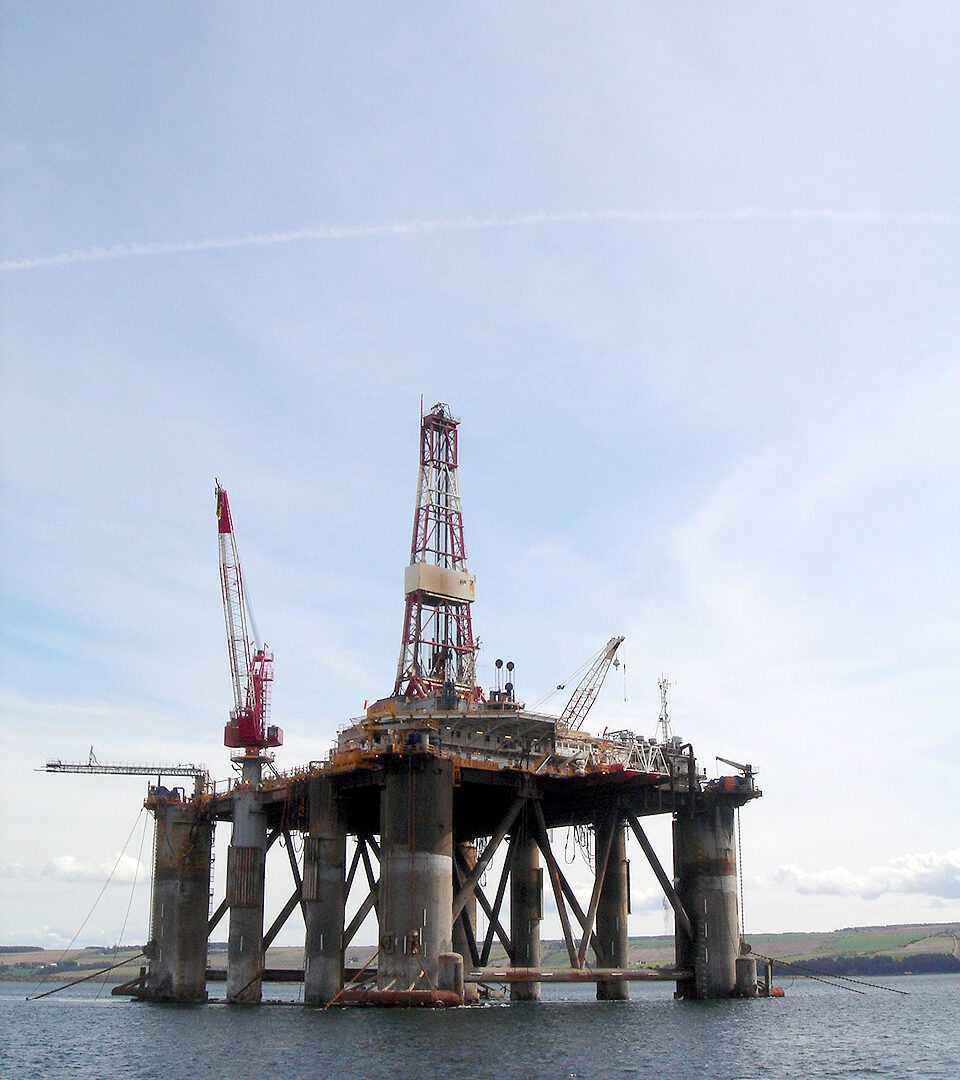AGR’s Aberdeen-based Well Management team was engaged to re-enter a well in the North Sea Orlando field and reach a new development target in challenging conditions.
In the role of Well Operator, during the field’s development drilling, our team successfully sidetracked the well through a tight window, built hole angle in unstable formations, geosteered the well through a 5km horizontal reservoir, and provided a suitable wellbore for running a complex dual-podded ESP completion.
Complicating factors
To achieve the planned well profile, first the 9-5/8” and 13-3/8” casing strings had to be cut and pulled from the existing well.
The cut and pull operation left little room to maneuver (194ft length window created vs 300ft planned), creating problems with magnetic interference on MLWD tools due to the proximity of the casing strings.
The objective was to track the top of the reservoir yet still provide a wellbore that would allow for running a rigid completion string and incorporate an ~800ft tangent section to accommodate the depth where the dual ESPs would be positioned.
When drilling the original well, formation issues had been encountered across the same interval, with shale reactivity, losses (drilling and cementing), ledges and wellbore hole instability The operations were planned for Winter/Spring. Any weather delays during drilling could impact the stability of the wellbore.
Client benfits
Minimise risks, harness powerful technology and develop rigorous contingency plans.
Critical well design
Through simplifying the well design by moving the kick-off point to a manageable depth higher up the well, our team created a well trajectory that would utilise standard hole and casing sizes (for UK operations). The design ensured Decipher Energy a smooth build up for running the planned completion string and one that did not create a wellbore of excessive length.
Meticulous preparation
AGR’s Well Management implemented detailed drilling and hole cleaning guidelines and carried out a core flood analysis for designing a mud system to stop the breakout of shales, control losses and minimise potential formation damage. Our technology, iQx™, was key in helping the Well Management engineers make informed decisions on behalf of the client from the beginning.
Contingency planning
Our team formed contingency plans ready to be deployed instantly. A robust lost circulation strategy and decision tree was developed and materials were taken to the well site on standby.
Upfront contingency planning and the identification of section risks led to predetermined procedures for all potential issues. This was particularly relevant in the 17-1/2” section where vibration and stick slip called for a change out of the RSS BHA for a motor alternative.
Avoiding weather delays
To reduce the weather delay risks associated with using oil-based mud in winter, AGR installed (offline) a rig site system for cuttings containment and processing. This reduced reliance on vessels for ship and skip of cuttings.
Trajectory solution
To ensure all objectives were met through the reservoir (remain within Upper Tarbert, avoid penetrating Heather shales, and provide suitable path for completion), the bottom hole assembly design was critical.
Our Well Management used ‘Point the bit’ rotary steerable technology to build the angle while avoiding contact with the borehole. This method reduced the client the tendency of the hole to spiral due to variations in trajectory. The geo-steering ‘Periscope HD’ tool was also utilised in the set up to monitor formation boundaries throughout.
This trajectory design took into account all potential risks, including; hole stability, dog legs, reservoir inclination, suitable well length, minimizing torque, completion and casing running requirements.
The Result
First attempt success despite major obstacles.
- The client benefitted from first attempt successful well kick off. No wellbore stability issues and hole angle built efficiently in line with plan, despite vibration and stick slip challenges
- Both the 13-3/8” and 9-5/8” casing strings were run and cemented without any issues, indicating excellent wellbore conditions
- AGR contributed to stable wellbore during drilling and no breakout occurred. A near perfect horizontal reservoir penetration was delivered with geosteering meeting all objectives
- Excellent deployment of the Lower Completion, screens and inner string running efficiently to depth. The well also flowed successfully, requiring only minimal clean up
- Our team helped Decipher Energy to meet all client reservoir objectives, providing a 4,574ft horizontal interval solely within the Tarbert sands
HSEQ Achievements
- The project was completed with zero LTI or MTC in 134,520 Manhours
- <2% of waste generated went to landfill



